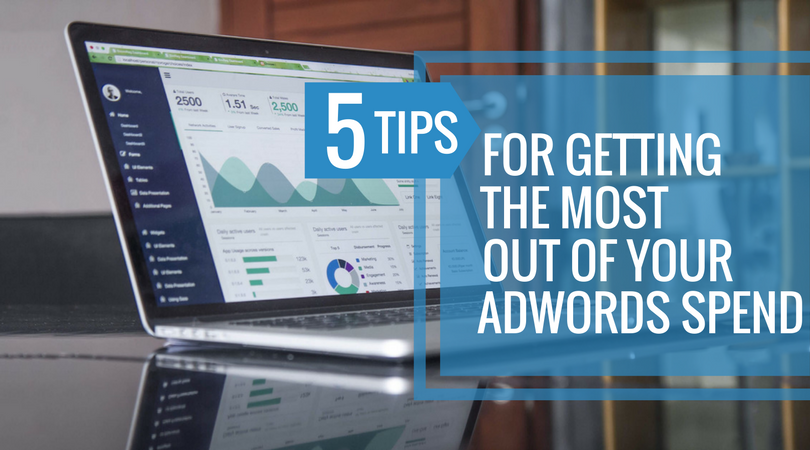
Here at MINDSCAPE, while we primarily work work to drive website traffic using Inbound Marketing tactics, we are actually big fans of PPC. PPC is a fantastic way to bolster your SEO and media efforts. A well executed paid search campaign can give you insight into the keywords your audience is using when they search and what type of content resonates with them.
Despite what you might have heard, you can’t just jump right into creating paid search campaigns. If you want to create SUCCESSFUL ones that get tons of clicks, you need to at least have some idea what you are doing. If you don’t, you will most likely end up bidding on keywords that produce little to no results.
Luckily, we have an Adwords Certified PPC expert, Jim Buchanan on our team. There is no magic formula for PPC success, but here are a few of his best tips to help you make the most of your time (and money) and make AdWords a key component of your marketing strategy.
1. Create expanded text ads.
Launched in late 2016, expanded text ads allow you to use more text, have more keyword opportunities, and take up more real estate on SERPs (Search Engine Result Pages). These ads are 2x the size of traditional ads and have a 140 character limit.
To implement these ads, we recommend creating ad groups that have a minimum of 3 expanded text ads per group so you have some variety and can test to see which ads perform best. Another thing you can do to keep your ads performing well, is retire old ads and replace them with new ones. It’s important to keep things fresh.
2. Make use of all the ad extensions that you can.
For those of you who are new to the AdWords game, ad extensions are a feature that shows extra business information with an ad, like an address, phone number, store rating, or more website links. If you want to add these to your campaign, there is no additional cost. Providing users with this targeted information typically increases an ad’s click-through-rate by several percentage points, increases your SERP real estate, and gives you more value for your ad spend.
3. Always test your ads against each other.
Performing regular A/B tests is an important part of creating successful AdWords campaigns. You can test different headlines, body copy, keywords, URLs and even designs. But make sure that you only change one element of the ad so you can accurately measure the impact that each element has on the ad’s performance.
Through this type of testing you will be able to gain insight into the types of things that resonate most with your audience and create future ads accordingly.
4. Use negative keywords.
AdWords explains negative keywords as, “A type of keyword that prevents your ad from being triggered by a certain word or phrase. Your ads aren’t shown to anyone who is searching for that phrase. This is also known as a negative match.”
Let’s break this down a little, shall we? When you are trying to select negative keywords to target, look for search terms that are similar to your keywords, but cater to customers searching for an entirely different product. For example, if your company makes clothes for pets; you may want to add negative keywords for search terms like “clothes for babies” and “clothes for children.” That way you are only getting traffic from those people who are searching for clothes for their furry friends, not just anyone who is searching for clothes.
Better targeting can put your ad ONLY in front of INTERESTED users, increasing your return on investment (ROI). Regularly updating negative keywords can be a rather tedious task at times, but it saves you money in the long run.
5. Create separate Search and Display ad groups.
For those of you who need a quick refresher (or aren’t familiar) search ads are those placed along the top and sides of search engines. Display ads are those placed on third party sites; they can be images, text, audio, or video.
The main reason to create separate groups for the 2 types of ads is your budget. You can pay the same price for high intent search traffic (search traffic that is very likely to click) and low intent display traffic. For some ads you might want to get the message out to everyone and their brother (display ads), and for some you might want only specific people to see the message (search ads). If you have different ad groups you can better control how you do this and how much you spend to do it.
Using AdWords can be tricky at first, but once you get started and learn what works (and what doesn’t) for your business, you will be spending your paid search dollars in a way that gets you more bang for your buck.
If you’ve enjoyed this blog post and would like to receive more information on, Inbound Marketing, SEO and everything digital marketing from MINDSCAPE, click below and subscribe to our blog! You’ll receive an email each time we publish a blog post.




